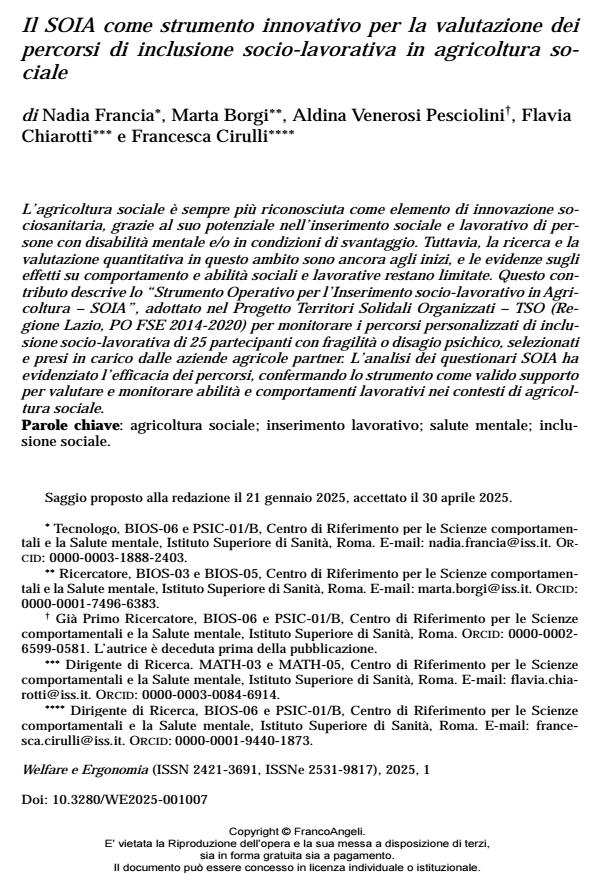SOIA, an innovative instrument to evaluate social and work-related inclusion in social farming
Journal title WELFARE E ERGONOMIA
Author/s Nadia Francia, Marta Borgi, Aldina Venerosi Pesciolini, Flavia Chiarotti , Francesca Cirulli
Publishing Year 2025 Issue 2025/1
Language Italian Pages 13 P. 111-123 File size 95 KB
DOI 10.3280/WE2025-001008
DOI is like a bar code for intellectual property: to have more infomation
click here
Below, you can see the article first page
If you want to buy this article in PDF format, you can do it, following the instructions to buy download credits

FrancoAngeli is member of Publishers International Linking Association, Inc (PILA), a not-for-profit association which run the CrossRef service enabling links to and from online scholarly content.
Social farming is increasingly acknowledged as a form of social and healthcare innovation, due to its significant potential for the social integration and occupational inclusion of individuals with mental disabilities and/or those in disadvantaged conditions. However, research and quantitative evaluation in the field of social farming remain limited, particularly regarding its impact on individual behaviour and the development of social and occupational skills. This paper presents the “Operational Tool for Socio-occupational Inclusion in Agriculture – SOIA” adopted in the Territori Solidali Organizzati – TSO Project (Regione Lazio, PO FSE 2014-20) to monitor the personalized inclusion pathways of 25 participants with vulnerabilities or mental health issues, selected and supported by the project’s partner farms. Analysis of the SOIA questionnaires demonstrated the effectiveness of these tailored pathways, confirming SOIA as a valid tool for assessing and monitoring work-related skills and behaviors in social farming contexts
Keywords: social farming; job placement; mental health; social integration.
Nadia Francia, Marta Borgi, Aldina Venerosi Pesciolini, Flavia Chiarotti , Francesca Cirulli, Il SOIA come strumento innovativo per la valutazione dei percorsi di inclusione socio-lavorativa in agricoltura sociale in "WELFARE E ERGONOMIA" 1/2025, pp 111-123, DOI: 10.3280/WE2025-001008